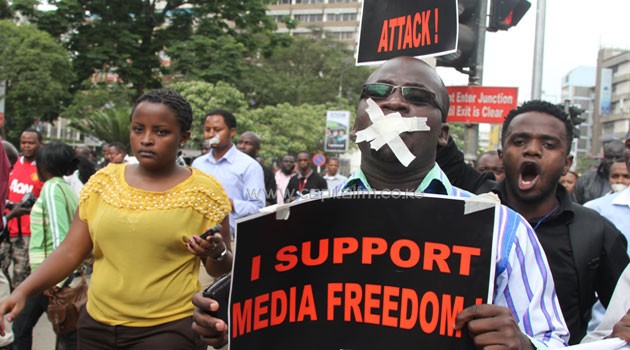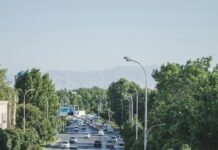By Mercy Odada
The Kenyan media environment has been quite hostile for Journalists. Episodes of Journalists being harassed and beaten up have escalated to unprecedented levels in the past few months.
Journalists have been attacked by politicians, the police, government officials and members of the public, with others losing their equipment and some lives.
Kenya grapples with reports of high levels of corruption, insecurity, tribal politics and political intolerance in the country, Journalists who cover such sensitive issues are often subjects of harassment and attacks.
On Tuesday, March 28, 2017, four Journalists from the standard media group set out an assignment to cover animal killings by police in the Laikipia region. However, their mission reached a dead end when they were arrested by security personnel and detained. This was not an isolated case.
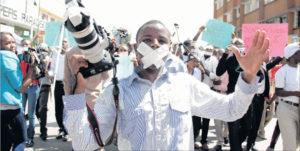 A report released on April 2018, by Article 19 titled Kenya violations of media freedom
A report released on April 2018, by Article 19 titled Kenya violations of media freedom
documented that in the run-up to the October 2017 repeat presidential poll a total of 41 cases of violations against journalists during this two month period. It also indicated that a total of 43 Journalists were physically assaulted during the monitoring period, and one received death threats, while three TV stations were shut down for covering content seen as undesirable by the government. While several cases have gone unreported due to fear on the part of the Journalists.
However, despite receiving formal complaints from journalists, police have rarely investigated these attacks or threats.
According to Article 19 Regional Director, Henry Maina no policy to address the situation can accompany thorough and timely prosecutions of all crimes committed against them.
“We must stem the tide of increased violence and impunity against journalists in Kenya,” said Henry Maina.
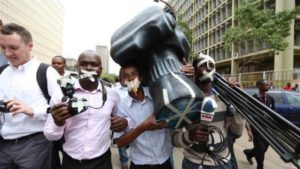 A report released in July 2015 by the Committee to Protect Journalists (CPJ) observed that
A report released in July 2015 by the Committee to Protect Journalists (CPJ) observed that
Kenyan officials were increasingly crafting legislation that undermines freedom of expression.
This had made Journalists more vulnerable not just to threats and attacks but also to legal
harassment or judicial repression.
In the wake of increased harassment and intimidation, journalists in different regions of the
country have identified ways of minimizing risk in the course of their work.
Solidarity
Through training by Kenya Correspondents Association (KCA) and DW Akademie in different parts of counties like Migori, Eldoret, Nakuru and Kisumu among others, journalists have been encouraged to improve professionalism, do peer review and unite amongst themselves.
Journalists formed press clubs comprising of those who have been trained and also sought to join associations and unions.
William Janak, KCA chairman argued that through the associations, journalists must engage and provide information about their situations so that collective efforts can be made to solve the threats.
“KCA cannot use members’ resources to take your case when in danger if you do not belong,” said Janak.
Through the associations and press clubs, journalists were able to take proactive initiatives when faced with threats and intimidation at work.
Being proactive
A section of Journalists in Kisii County came together and decided to not to cover any function by Kisii University management and student leadership until when they apologized for harassing Journalists while on duty.
“Because of the blackout, we gave them they sought to engage with us. However, some
Journalists who had not been exposed to training on safety and security went behind our backs to demand favors for coverage which almost ruined the plan” said Araka Matara.
According to Matara, the unity in coverage boycott led to improved relationships with the
stakeholders in the region.
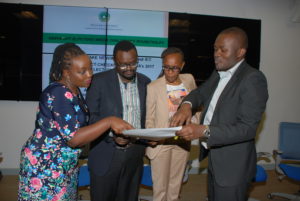 In Kakamega, after several cases, intimidation and harassment by a section of Journalists held a peaceful demonstration over increasing attacks and threats against them from police and politicians.
In Kakamega, after several cases, intimidation and harassment by a section of Journalists held a peaceful demonstration over increasing attacks and threats against them from police and politicians.
They demonstrated along the busy Kakamega–Mumias Road and presented a petition to Deputy County Commissioner Willy Cheboi. This helped reduce cases of harassment especially by government agencies that were becoming rampant.
While in Machakos, KCA Eastern representative, George Owiti reported that Journalists
resisted threats by a public official who tried to evict them while threatening them with arrest from the compound that houses several government offices. As a group, they chose to stand firm.
“We realized together we can help reduce some of the challenges that we face in the course of our work,” said George.
Engaging Government Agencies
It has been noted that major threats to the safety and security of journalist come from the
various security agencies. This was witnessed on March 27, 2018, when police brutalized
journalists who had gone to Jomo Kenyatta International Airport to cover Miguna Miguna’s
return. To avoid such incidents, media stakeholders in some countries sought to engage security agencies.
For instance in Rwanda Journalists through Rwanda Media Commission (RMC) is working to
include in the police training curriculum modules on media freedom and the safety of Journalists.
While in Uganda media executives had an engagement with the Inspector General of Police who instruct the police against using excessive force and brutality against journalists as had been witnessed in the recent past.
Lydia Gachungi of UNESCO and a Media Stakeholder noted that the biggest challenge to engagement with security agencies in Kenya is lack of coordination and inclusivity in the media industry.
Adding “Through the Kenya Media Sector working group, the media stakeholders
hope to solidify their voices for the common good which includes safety and security of
journalists.”
Professionalism
According to Victor Bwire of Media Council of Kenya (MCK), to curb lack of professionalism which has been sighted as one of the factors that put journalist’s life under threat, the institution has set up college inspection and accreditation committee.
This will ensure journalism training colleges meet the teaching qualification standards.

